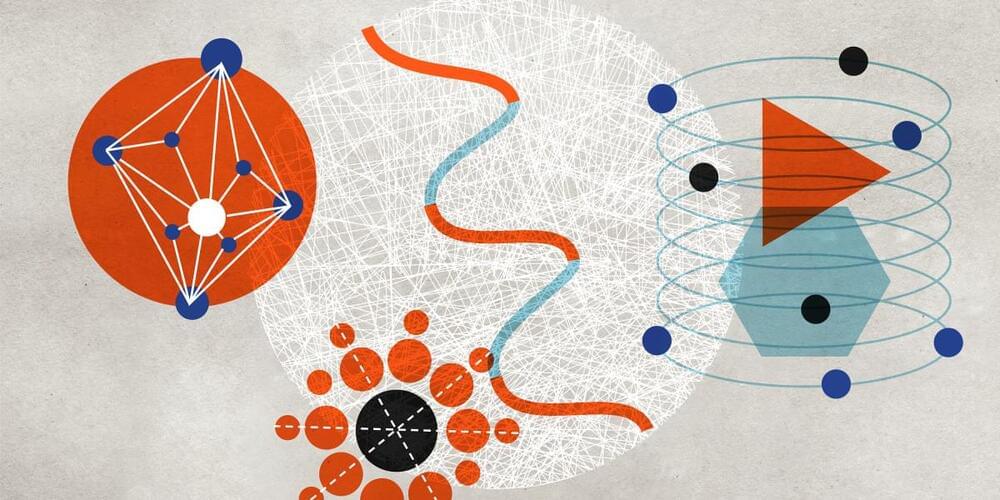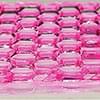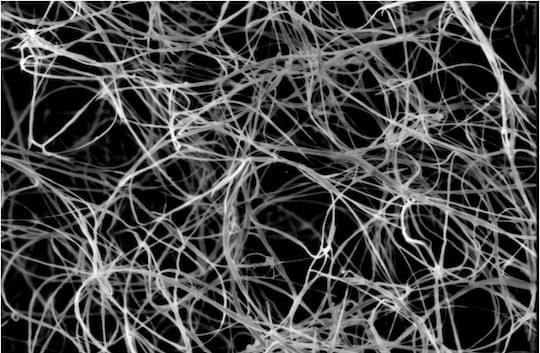Our ability to create nano scale products is getting better fast, and these breakthroughs could transform every industry from manufacturing to healthcare and beyond.
Category: nanotechnology – Page 171
The Next Century of War
Posted in drones, internet, nanotechnology, robotics/AI, space
Start listening with a 30-day Audible trial and your first audiobook is free. Visit.
http://www.audible.com/isaac or text “isaac” to 500–500.
Future battlefields will employ ever-more technology, whether that battlefield is on earth, in the sea, in space, or in cyberspace. Today we will examine the roles robots, drones, artificial intelligence, armored suits, and nanotech may play in the future of war.
Visit our Website: http://www.isaacarthur.net.
Support us on Patreon: https://www.patreon.com/IsaacArthur.
Facebook Group: https://www.facebook.com/groups/1583992725237264/
Reddit: https://www.reddit.com/r/IsaacArthur/
Twitter: https://twitter.com/Isaac_A_Arthur on Twitter and RT our future content.
SFIA Discord Server: https://discord.gg/53GAShE
Listen or Download the audio of this episode from Soundcloud:
Episode’s Audio-only version: https://soundcloud.com/isaac-arthur-148927746/the-next-century-of-war.
Episode’s Narration-only version: https://soundcloud.com/isaac-arthur-148927746/the-next-centu…ation-only.
Credits:
The Next Century of War.
Science & Futurism with Isaac Arthur.
Episode 280; March 4, 2021
Produced & narrated by isaac arthur.
Written by:
The fundamental rotation of micro and nano-objects is crucial for the functionality of micro and nanorobotics, as well as three-dimensional imaging and lab-on-a-chip systems. These optical rotation methods can function fuel-free and remotely, and are therefore better suited for experiments, while current methods require laser beams with designed intensity profiles or objects with sophisticated shapes. These requirements are challenging for simpler optical setups with light-driven rotation of a variety of objects, including biological cells.
In a new report now published in Science Advances, Hongru Ding and a research team in engineering and materials science at the University of Texas at Austin, U.S., developed a universal approach for the out-of-plane rotation of various objects based on an arbitrary low-power laser beam. The scientists positioned the laser source away from the objects to reduce optical damage from direct illumination and combined the rotation mechanism via optothermal coupling with rigorous experiments, coupled to multiscale simulations. The general applicability and biocompatibility of the universal light-driven rotation platform is instrumental for a range of engineering and scientific applications.
Join Professor Michelle Simmons to find out how scientists are delivering Richard Feynman’s dream of designing materials at the atomic limit for quantum machines. 🔔Subscribe to our channel for exciting science videos and live events, many hosted by Brian Cox, our Professor for Public Engagement: https://bit.ly/3fQIFXB
#Physics #Quantum #RichardFeynman.
Sixty years ago, the great American physicist Richard Feynman delivered a famous lecture in which he urged experimentalists to push for the creation of new materials with features designed at the atomic limit. He called this the “final question”: whether ultimately “we can arrange the atoms the way we want: the very atoms all the way down!”
Professor Simmons will explain how to manufacture materials and devices whose properties are determined by the placement of individual atoms, and will highlight the creative explosion in new devices that has followed and the many new insights into the quantum world that this revolution has made possible.
Watch next:
Putting the sun in a bottle: the path to fusion power ▶ https://youtu.be/eYbNSgUQhdY
What is (qunatum) biology? with Jim Al-Khalili ▶ https://youtu.be/_To6oNh9-ZQ
Nanomaterials: from bench to bedside ▶ https://youtu.be/Z5FG1dSdI7E
The Royal Society is a Fellowship of many of the world’s most eminent scientists and is the oldest scientific academy in continuous existence.
A look at the concept of Self-Replicating Machines, Universal Assemblers, von Neumann Probes, Grey Goo, and Berserkers. While we will discuss the basic concept and some on-Earth applications like Medical Nanotechnology our focus will be on space exploration and colonization aspects.
Join the Facebook Group:
https://www.facebook.com/groups/1583992725237264/
Visit our Website:
www.IsaacArthur.net.
Support the Channel on Patreon:
https://www.patreon.com/IsaacArthur.
Listen or Download the audio of this episode from Soundcloud:
https://soundcloud.com/isaac-arthur-148927746/https://soundc…machines-1
Cover Art by Jakub Grygier:
This year’s 35 Innovators are making it possible for familiar materials like glass, steel, and electronics to have completely new properties.
Extrusion-based 3D printing/bioprinting is a promising approach to generating patient-specific, tissue-engineered grafts. However, a major challenge in extrusion-based 3D printing and bioprinting is that most currently used materials lack the versatility to be used in a wide range of applications.
New nanotechnology has been developed by a team of researchers from Texas A&M University that leverages colloidal interactions of nanoparticles to print complex geometries that can mimic tissue and organ structure. The team, led by Dr. Akhilesh Gaharwar, associate professor and Presidential Impact Fellow in the Department of Biomedical Engineering, has introduced colloidal solutions of 2D nanosilicates as a platform technology to print complex structures.
2D nanosilicates are disc-shaped inorganic nanoparticles 20 to 50 nanometers in diameter and 1 to 2 nanometers in thickness. These nanosilicates form a “house-of-cards” structure above a certain concentration in water, known as a colloidal solution.
The ever-increasing production and use of plastics over the last half century has created a huge environmental problem for the world. Currently, most of the 4.9 billion tonnes of plastics ever produced will end up in landfills or the natural environment, and this number is expected to increase to around 12 billion tonnes by 2050.
In collaboration with colleagues at universities and institutions in the UK, China and the Kingdom of Saudi Arabia, researchers in the Edwards/ Xiao group at Oxford’s Department of Chemistry have developed a method of converting plastic waste into hydrogen gas which can be used as a clean fuel, and high-value solid carbon. This was achieved with a new type of catalysis developed by the group which uses microwaves to activate catalyst particles to effectively ‘strip’ hydrogen from polymers.
The findings, published in Nature Catalysis, detail how the researchers mixed mechanically-pulverised plastic particles with a microwave-susceptor catalyst of iron oxide and aluminium oxide. The mixture was subjected to microwave treatment and yielded a large volume of hydrogen gas and a residue of carbonaceous materials, the bulk of which were identified as carbon nanotubes.
Researchers from Rice University claim that processing boron nitride nanotubes used to be challenging, but not anymore.
Professors Matteo Pasquali and Angel Martí, along with their team of researchers, have simplified the handling of the highly valuable nanotubes, making them more suited for use in large-scale applications including electronics, aerospace, and energy-efficient materials.
According to the study’s findings published in Nature Communications, boron nitride nanotubes, also known as BNNTs, can self-assemble into liquid crystals when exposed to certain circumstances, particularly concentrations of chlorosulfonic acid that are greater than 170 parts per million by weight.
Nanotechnologist and co-founder of the Black in Nanotech initiative, Olivia Geneus. (Courtesy: Alexander Harold) Welcome to this Physics World Nanotechnology Briefing, which showcases the breadth of applications of modern nanotechnology.
Olivia Geneus is one of the growing number of scientists who are developing nanotechnologies for medicine. In an interview, the PhD student at the State University of New York at Buffalo explains how she is developing nanoparticles designed to cross the blood–brain barrier in order to image and destroy brain cancer cells. Geneus also talks about Black in Nanotech Week, which she co-founded, and the need to encourage Black children to consider careers in science.
Ed Lester of the UK’s University of Nottingham knows that there are myriad uses for nanoparticles. In 2007 he founded the company Promethean Particles when he realized industrial users were not able to source nanoparticles in the quantities and quality that they required. In an interview, Lester talks about some of the company’s development projects including nanoparticles for aviation, healthcare and energy.









